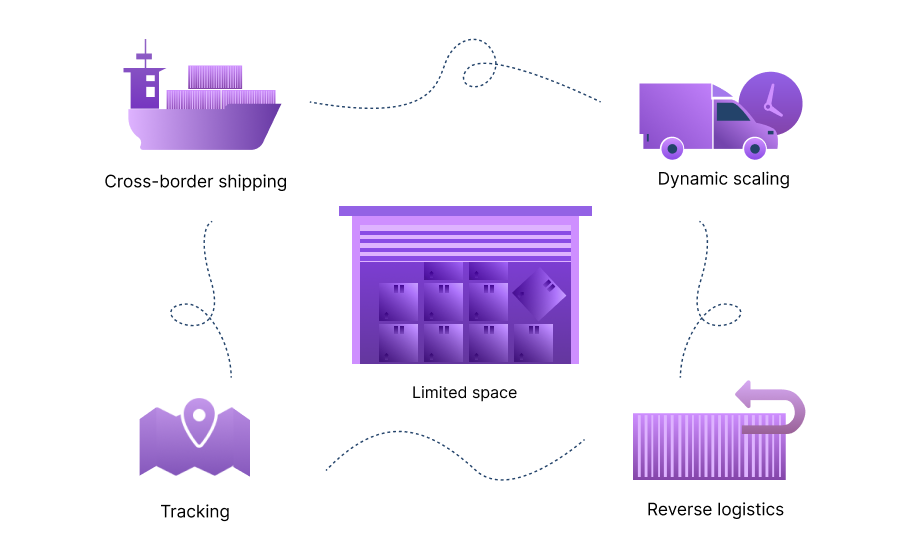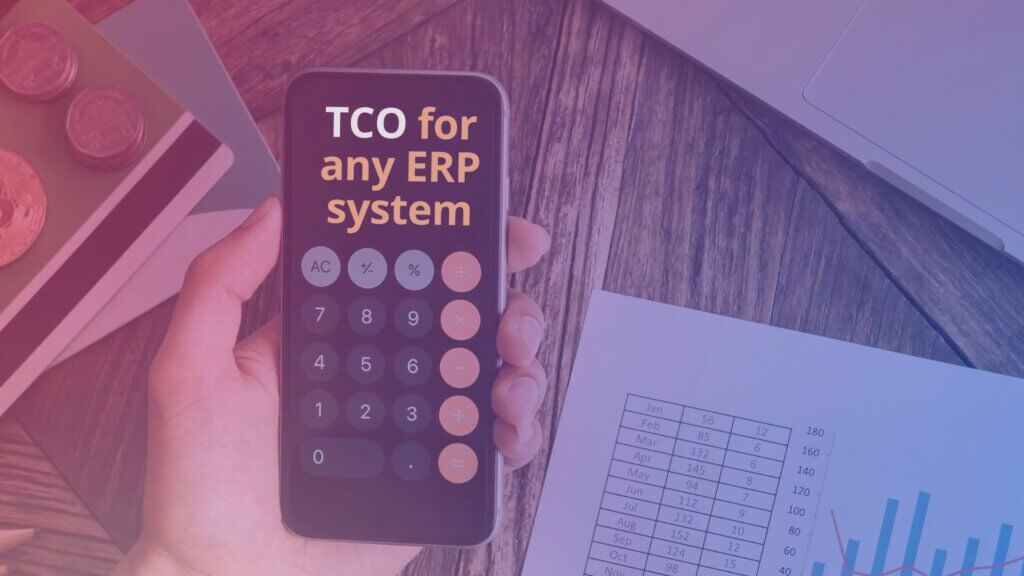Logistics is the centerpiece of every E-commerce business; its efficiency is key to uninterrupted performance in both social and economic aspects – while customers get their orders on time, company profits keep growing.
During the planning stage, all the E-commerce logistics seem to be perfectly organized and co-arranged; yet in practice, even one trivial mistake can lead to a ripple effect and disrupt the overall functioning of the logistics chain. In a modern digital landscape, these problems can be addressed with ERP systems, like Odoo, which help to streamline its performance and the performance of the company as a whole. Let’s learn more about it.
What Are the Most Common Logistics Problems?
Dynamic scaling
Dynamic scaling relates to uninterrupted service delivery regardless of the order sizes or amounts, shipping methods, and storage location. Provided the business extends its facilities, inventory, or shipping systems, such changes should not impact the customers in any way.
One of the most common reasons for desynchronization is manual data input and the lack of proper and timely communication between various departments.
Delays, cross-border shipping
Logistics delays are often a nightmare for both businesses and customers. In fact, ‘delays’ are mentioned among the most common obstacles to starting E-commerce business.
Apart from human errors, there can be unavoidable circumstances, such as road closures, weather conditions, or customs issues, which can cause significant delays, and even worse – reverse delivery. Such delays cause temporary financial losses, which can accumulate and in the long run lead to non-profitable business.
Limited space
While the business is growing, it requires a better warehouse capacity to host all the inventory and provide efficient order fulfillment. In an ideal warehouse, every inventory unit is given a certain code and is easily traced along its end-to-end movement. There are no blind zones, as every part is considered while developing its layout.
In reality, the warehouse space is often divided inefficiently, deteriorating its capacity. Many warehouse activities and interactions are still performed manually, which is not the best strategy for providing timeliness and high quality.
Tracking
Openness is one of the best tools for customer retention and trust-based relationships.
When placing an order, customers expect accurate routing details of their package and constant updates about its status. However, numerous online E-commerce companies still struggle with tracking procedures, causing frustration for their clientele.
Reverse logistics
While end-to-end logistics still requires mastering, reverse logistics problems in E-commerce cause even more trouble, as they are more difficult to organize than a regular movement of goods to customers.
This is just a short list of common logistics problems. Despite their different forms, they share the same reasons – manual input and processing of information, lack of timely communication, and insufficient visibility of item tracking. All these issues and even more can be addressed with one solution – the Odoo ERP system properly configured.

How Can Odoo Help the Logistics Chain?
Warehouse management
Real-time visibility allows businesses to keep track of every piece of inventory, manage its timely fulfillment (resolving the over- and understock issues), and anticipate potential risks with delivery. Odoo Warehouse Management is one of the modules that enables businesses with a wide-view mode over one or multiple warehouses, helping to monitor all the vendor-to-customer inventory movements.
The perfection of Odoo Warehouse Management can only be complemented with the Picking and Reservation Strategy app. It allows businesses to create the most efficient picking routes in the warehouse, which optimizes the process of order picking, and thereby, saves time and increases productivity. Another app, Ventor (Odoo barcode app for mobile computers), will guide pickers according to the optimal route to maximize productivity.
Scalability
One of the best things about Odoo is the unlimited scalability, either horizontal or vertical. The system is fully adjustable to the company’s expanding workload, adding the required changes to the system. What’s even more important, all the upgrades are performed in a full-functioning mode, hence, there will be no pauses in service for the customers, but only improvement to the E-commerce logistics.
Carrier integration
The majority of E-commerce businesses and carriers have in-built tracking systems, however, it’s the data synchronization that matters most.
Real-time visibility is the combination of data from E-commerce stores, marketplaces, and carriers. Provided all the systems have a streamlined exchange of information, the customers get to see accurate information regarding their orders; otherwise, the updates are rather conflicting and misleading.
Odoo helps to integrate the data from several sources into one central platform, giving the most precise information about product placement and movement. Moreover, it maximizes management efficiency, as instead of checking up on various applications, everything is transformed into a unified form.
Route optimization and Fleet management
Odoo’s route optimization is one of the major solutions against logistics business problems.
Odoo ERP ensures the usage of real-time tracking with GPS, time slot management, vehicle load optimization, historical data and weather patterns analysis, and route optimization. These tools help to restructure and rationalize the logistics routes avoiding potential risks, and delays, and thus, enhance customer satisfaction.
Customer portal
Odoo’s customer portal is developed with the users in mind. It offers optimized navigation through all the menus and structures, a consistent and intuitive layout, a clear hierarchy of functions, and highly responsive performance. The portal is created to facilitate user-website interaction, leading to a higher level of client satisfaction.
Analytics and reporting
Data analytics helps companies reach a competitive edge in a highly demanding digital landscape. Timely reports allow businesses to keep control over their performance, anticipate, and thus, prevent potential risks, and maximize the overall performance.
With the implementation of Odoo, the whole analytics department is right under the tips of the fingers. Such a ‘proximity’ to information allows constant vigilance about logistics business problems, and thus, timely and data-driven decisions about preventing them.
The Final Thoughts
The impeccable performance of the E-commerce business is backed up by the efficient performance of its logistics chain. Odoo ERP solutions provide businesses with all the necessary tools for managing logistics activities, mitigating potential risks, and maintaining the functionality of the chain, and thus, the whole company.
If you have questions about how Odoo ERP implementation can enhance your logistics chain performance, get in touch with us.
Feel free to ask your questions in the comments section below, share this article across your network, and subscribe to our newsletter.
Recommended articles:
- Optimizing Inventory Control with Odoo: Understanding Forecasting Methods
- How to build picking routes in your warehouse for walking minimization
- How to create a warehouse map and upload it to Odoo
- ERP Mistakes and How to Avoid Them
----------------------------------------------------------------------
Education: Bachelor's degree.
----------------------------------------------------------------------
Experience:
Marketing manager
VentorTech
----------------------------------------------------------------------
Current position: Marketing manager VentorTech
----------------------------------------------------------------------
B2B Marketing
Google Tag Manager and GA
Motion Graphics Production






0 Comments